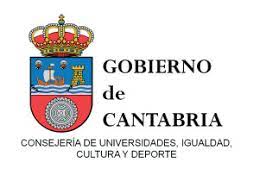Quotations books during the Middle Ages and the Renaissance
DOI:
https://doi.org/10.55422/bbmp.73Keywords:
Book of quotations, Preaching, Humanism, Authority, CommonplaceAbstract
The aim of this article is to point out the influence of historical, cultural and material factors in the production of the books of quotations during the late Middle Ages and the Renaissance. All these aspects offer some keys to improve our knowledge of this kind of books.
Downloads
Publication Facts
Reviewer profiles N/A
Author statements
Indexed in
- Academic society
- Sociedad Menéndez Pelayo
- Publisher
- Sociedad Menéndez Pelayo
Global Statistics ℹ️
|
429
Views
|
123
Downloads
|
|
552
Total
|
|
References
A RAGÜÉS ALDAZ, José (2003). «Otoño del humanismo y erudición ejemplar» La Perinola, 7, pp. 21- 59. DOI: https://doi.org/10.15581/017.7.28076
BAXANDALL, Michael (1996). Giotto y los oradores, trad. española de A. Lelmo y otros, Madrid, Visor. CAPPELLI, Guido M. (2007). El humanismo italiano. Un capítulo de la cultura europea entre Petrarc y Valla, Madrid, Alianza.
CHENU, Marie-Dominique (1954). Introduction à l’étude de Saint Thomas d’Aquin, Montreal, Insti- tut d’Études Médiévales.
EGIDO, Aurora (1988). «Lope de Vega, Ravisio Textor y la creación del mundo como obra de arte», Homenaje a Eugenio Asensio, Madrid, Gredos, pp. 171-184.
GARIN, Eugenio (1976). L’Educazione in Europa, 1400-1600. Problemi e programmi, Bari, Laterza.
GOYET, Francis (1986), «A propos de “ces pastissages de lieux communs”», Bulletin de la Société des Amis de Montaigne, 5, pp. 11-26.— (1987). «Le rôle des notes de lecture dans la genèse des Essais», Bulletin de la Société des Amis de Montaigne, 7-8, pp. 9-30. — (1991). «The Word “Commonplaces” in Montaigne», Toward a Definition of Topos. Approaches to Analogical reasoning, ed. L. Hunter, Houndmills (Hampshire), Macmillan, pp. 66-77.
GRAFTON, Anthony (1998). «El lector humanista», Historia de la lectura en el mundo occidental, eds. G. Cavallo y R. Chartier, Madrid, Taurus, pp. 281-328.
GRENDLER, Paul F. (1989). Schooling in Renaissance Italy. Literacy and Learning, 1300-1600, Baltimore-Londres, The Johns Hopkins University Press.
HAMESSE, Jacqueline (1995). «Parafrasi, florilegi e compendi», Lo spazio letterario del medioevo. 1: Il medioevo latino, vol. III. La recezione del testo, Roma, Salerno, pp. 197-220. — (1998). «El modelo escolástico de la lectura», Historia de la lectura en el mundo occidental, eds. G. Cavallo y R. Chartier, Madrid, Taurus, pp. 157-185.
HAMMOND, Paul (1991). «The play of quotation and commonplace in King Lear, 78-129, Toward a Definition of Topos. Approaches to Analogical reasoning», ed. L. Hunter, Houndmills (Hampshire), Macmillan, pp. 78-129. DOI: https://doi.org/10.1007/978-1-349-11502-0_5
HIRSCH, Rudolph (1978). «Printing and the Spread of Humanism in Germany: The Example of Albrecht von Eyb», The Printed World: Its Impact and Difussion, Londres, Variorum Reprints.
JIMÉNEZ CALVENTE, Teresa (2001). «La Margarita poética de Albrecht von Eyb: una exitosa miscelánea olvidada», Revista de Poética Medieval, 7, pp. 133-160. I NFANTES, Víctor (1988). «De Officinas y Polyantheas: los diccionarios secretos del Siglo de Oro», Homenaje a Eugenio Asensio, Madrid, Gredos, pp. 243-257.
LERNER, Isaias (1998). «Misceláneas y polianteas del Siglo de Oro español», Actas del Congreso Internacional sobre Humanismo y Renacimiento, eds. J. Matas Caballero y otros, León, Universidad de León, vol. II, pp. 71-82.
LÓPEZ POZA, Sagrario (1990). «Florilegios, polyantheas, repertorios de sentencias y lugares comunes. Aproximación bibliográfica», Criticón, 49, pp. 61-76. — (2000). «Polianteas y otros repertorios de utilidad para la edición de textos del Siglo de Oro», La Perinola, 4, pp. 191-214. DOI: https://doi.org/10.15581/017.4.28153
MOSS, Ann (1996). Printed Commonplace-Books and the Structuring of Renaissance Thought, Oxford, Clarendon Press. — (2003). Renaissance Truth and the Latin Language Turn, Oxford, Oxford University Press. DOI: https://doi.org/10.1093/acprof:oso/9780198159087.001.0001
PARKES, Malcom Beckwith (1976). «The Influence of the Concepts of Ordinatio and Compilatio on the Development of the Book», Medieval Learning and Literature. Essays Presented to Richard William Hunt, eds. J. J. G. Alexander y M. T. Gibson, Oxford, Clarendon Press, pp. 115-141.
RICO, Francisco (2002). El sueño del humanismo. De Petrarca a Erasmo, edición corregida y aumentada, Barcelona, Destino.
ROUSE, Richard Hunter (1979). «Florilegia and Latin Classical Authors in Twelfth and Thirteenth Century Orléans», Viator, 10, pp. 131-160. DOI: https://doi.org/10.1484/J.VIATOR.2.301524
ROUSE, Richard Hunter, y ROUSE, Mary Ames (1976). «The Florilegium Angelicum: its Origin, Content, and Influence», en Medieval Learning and Literature. Essays Presented to Richard William Hunt, eds. J. J. G. Alexander y M. T. Gibson, Oxford, Clarendon Press, pp. 66-114. — (1979). Preachers, Florilegia and Sermons: Studies on the Manipulus florum of Thomas of Ireland, Toronto, Toronto University Press.
RUIZ ARZÁLLUZ, Íñigo (1996). «El mundo intelectual del “antiguo autor”: las Auctoritates Aristotelis en la Celestina primitiva». Boletín de la Real Academia Española, 86, pp. 265-284. R USSELL, Peter E. (1988). «Discordia universal: La Celestina como “Floresta de philosophos”», Ínsula, 497, pp. 1 y 3.
TUBAU, Xavier (2007). Una polémica literaria: Lope de Vega y Diego de Colmenares, Madrid-Frankfurt Am Main, Iberoamericana-Vervuert. DOI: https://doi.org/10.31819/9783865279521
ULLMAN, Berthold Luis (1932). «Classical Authors in Certain Medieval Florilegia». Classical Philology, 27, pp. 1-42. VECE, Carlo (1998). «Aldo e l’invenzione dell’indice», Aldus Manutius and Renaissance Culture. Essays in Memory of Franklin D. Murphy, Florencia, Leo S. Olschki, pp. 109-141. DOI: https://doi.org/10.1086/361426
WITT, Ronald (1982), «Medieval “Ars Dictaminis” and the Beginnings of Humanism: a New Construction of the Problem», Renaissance Quarterly, 35, pp. 1-35. DOI: https://doi.org/10.2307/2861451
Downloads
Published
How to Cite
Issue
Section
License

This work is licensed under a Creative Commons Attribution-NonCommercial 4.0 International License.







